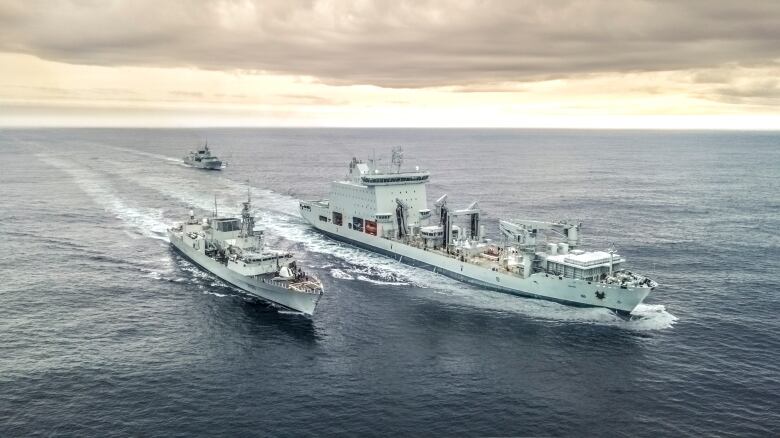Davie aims to replace Canadian Coast Guard's entire icebreaker fleet
Shipbuilding firm will start work on icebreaker conversion this summer

Chantier Davie Canada Inc., the country's largest shipbuilding firm,is gunning for contracts to build new icebreakers for the Canadian Coast Guard.
"Given the age of the Canadian Coast Guard fleet, the entire icebreaker fleet will need to be replaced in the near future," says Alex Vicefield, CEO ofInoceaGroup, which has owned Daviesince 2012.
"We have every intention of submitting a world-class proposal together with global leaders in icebreaker design."
Until then, Davie, located across the river fromQuebec City inLvis, is in the home stretch of negotiations withthe federal government to convert three surplus commercial icebreakers for the Canadian Coast Guard.
Under its new management, Daviehas made its mark in the industry by turning surplus ships into lower-cost solutions.
The first converted icebreaker will be ready in time for the 2018-2019 ice season on the St. Lawrence and Great Lakes.
However, when it comes to building new ships, there remain doubts about Davie's ability to deliver at a competitive cost.
Canadian ships cost 'twice as much'
MarcGagnonis director, government affairs and regulatory compliance for the Montreal-based Fednav, whichoperates a fleet of nearly 100 ships.
Fednav buys its ships in Japan because,Gagnonsays,Canadian-built ships cost "at least twice as much."
"Davie no longer has the capacity to build an icebreaker or a frigate," Gagnon said. "To do so, they would have to re-equip their shipyard."

VicefieldsaidDavie is aware of the challenges ahead and has invested $60 million to upgrade its steel-cutting and IT infrastructure.
The University of British Columbia's Michael Byers, who argues that Ottawa's current shipbuilding strategy is too costly and needlesslyslow, says building government ships in Canada makes sense and Davie is definitely up to the task.
"For every $100 million that is spent on building a ship in Canada, you would get several times more than that in terms of knock-on economic activity," Byerssaid.
"And Davie is the logical place to do it. They have a very large shipyard. They have a very capable workforce. The labour costs are relatively low and it's an active shipyard."
Asterix 'very impressive'
Last year, before Ottawa agreed to sit down with Davie to discuss the icebreaker conversions, Davie delivered theAsterix a container ship converted into a supply ship for the Royal Canadian Navy on time and on budget.
In 2015, when thenavy's existing two supply ships were no longer seaworthy,Vicefieldand his team proposed converting theAsterixto a naval supply ship for about $600 million.
"What they did with the Asterix was very impressive," Byers said. "There is no other shipyard in Canada that could have done that."

In comparison, Vancouver-based Seaspanwaschosento build two new navy supply ships for $2.6 billion. But the first new supply ship will only be ready in 2020.
"This is a cutthroat business and there is a lot of money involved and a lot of politics involved," Byers said.
"Davie has the capacity and the experience to build icebreakers, plus they have the lowest costs in terms of labour of any shipyard in the country," he said.
The Canadian Coast Guard has an aging fleet of 13 ice-breaking vessels and two hovercraft.
Ice still a hazard to navigation
Canada's oldest and largest icebreaker, the CCGS Louis S. St-Laurent, was commissioned in 1969.
It was to be replaced in 2017 by the CCGS John G. Diefenbaker.
But from the initial estimate of $720 million, the Diefenbaker is now expected to cost over $1.4 billion, with delivery in 2022.

To meet Ottawa's need for "interim icebreakers," Davie found four icebreakers built for oil and gas drilling off the coast of Alaska that were idled when oil prices fell, putting an end of Shell's Arctic venture.
Prime Minister Justin Trudeau agreed to negotiationswith Davie to acquirethe three smaller ice-breaking vessels, leaving aside the larger Aiviq.
With no other shipyard matching Davie's proposal, the conversion work will begin this summer.












_(720p).jpg)


 OFFICIAL HD MUSIC VIDEO.jpg)
.jpg)



























































































